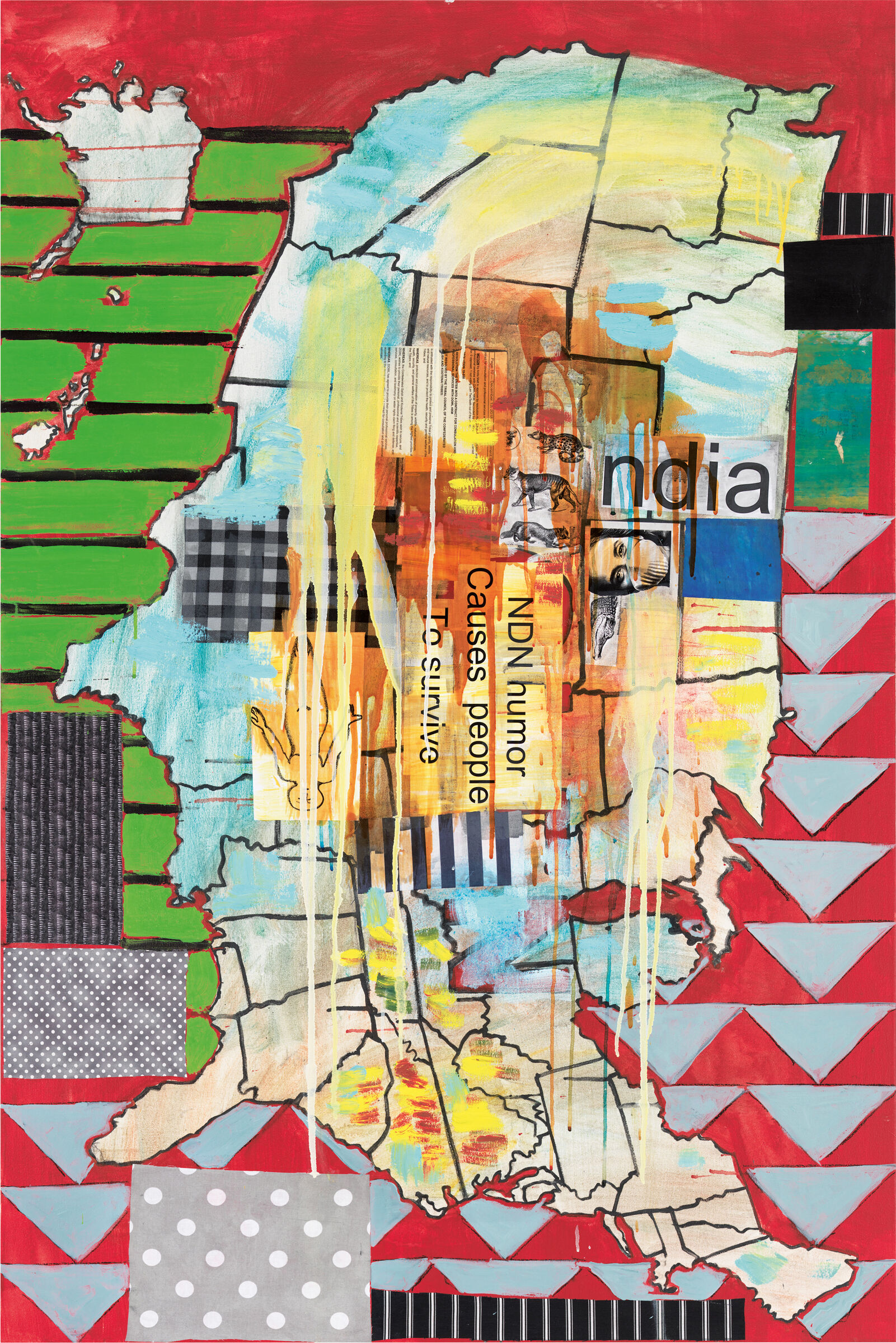Target: The Wild West, 1999
Mar 28, 2023
0:00
Target: The Wild West, 1999
0:00
Narrator: In Target: The Wild West, Smith responded to the work of Jasper Johns, who centered simple, iconic forms like maps and targets.
Jaune Quick-to-See Smith: And so I was inclined to, over the years, say, well, these guys are really successful in the art world, but what can I do to not copy their work, but mimic something in their work, and then I can tell an Indian story.
Narrator: Unlike Johns’ targets, Smith’s makes significant use of text.
Jaune Quick-to-See Smith: It's talking about how Indian people have been targets of consumerism, of commodification. Look at the books and the movies of made up mythological Indians that don't exist, of cultures that we ourselves don't recognize at all, of them having Indians speak gobbledygook on the screen. In the 1950s, when I was watching these programs, I would root for the cowboys because the Indians were stupid. They were drunk and they weren't nice people. And often they were the bad guys so I would root for the cowboys. I've heard that over and over from other people my age.
There's no way to overcome the kind of racism that comes out of that even if it's happening today. But we can use it in our art.


